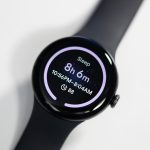- Dell’s XPS 13 2-in-1 is our pick for best hybrid laptop for its excellent design and performance.
- But there are also cheaper options we love, like Lenovo’s IdeaPad Flex 5.
- Check out our guide to the best tablets for more touchscreen computer buying advice.
There are two main types of 2-in-1 laptops – detachables and convertibles. Detachable devices allow you to remove the screen from your laptop’s keyboard so that you can use it as a tablet separately. Convertibles, meanwhile, have a flexible hinge that allows you to bend the display backward and flip it around so that it can be used in different modes as a single device.
Shopping for a 2-in-1 is a lot like picking out a regular laptop. That means taking factors like the operating system (OS), processor (CPU), memory (RAM), overall size, and display quality into account.
But since 2-in-1 laptops are ideal for creatives thanks to their flexible designs, you’ll also want to consider whether they have any extra features that may be beneficial for your workflow. Some 2-in-1 laptops, for example, come with styluses for sketching or different screen ratios for watching movies.
Here’s a look at the best 2-in-1 laptops you can buy based on our testing and research.
Here are the best 2-in-1 laptops:
- Best overall: Dell XPS 13 2-in-1
- Best detachable 2-in-1: Microsoft Surface Pro 7
- Best 15-inch 2-in-1 laptop: Microsoft Surface Book 3
- Best 2-in-1 Chromebook:
- Best budget 2-in-1: Lenovo IdeaPad Flex 5
Dell
The Dell XPS 13 2-in-1 offers a beautiful design, plus it’s powerful, and the display can fully rotate around the body for 2-in-1 use.
Pros: Excellent compact design, attractive screen with slim borders, good performance
Cons: Not much port selection
Dell’s XPS 13 is still our favorite laptop, and thankfully it comes in a 2-in-1 configuration, too. Like the standard notebook version, the Dell XPS 13 2-in-1 offers the right combination of stunning design and powerful performance to make it the best choice for most people.
Let’s start with the design. The Dell XPS 13 2-in-1 is a convertible 2-in-1, meaning you can rotate the display to use it in tablet mode. You can also stand the device up in tent mode, which is perfect for tasks like watching movies on planes, or using the touchscreen without having to physically hold the device.
The Dell XPS 13 has a high quality 13.4 inch- screen with a 1,900 x 1,200 resolution. The laptop is thin, too — it’s only 0.56 inches thick, meaning that it’s easy to slide into a bag.
Of course, it’s what’s under the hood that makes this device among the best. The base model offers an Intel Core i3 processor with 8GB of RAM and a 256GB solid-state drive (SSD).
But, it can also be upgraded to offer up to an 11th-generation Intel Core i7 chip with 32GB of RAM and a hefty 1TB SSD. In other words, while the device isn’t necessarily the best gaming or video editing machine, thanks to the lack of discrete graphics card, it will easily handle heavy multitasking and productivity apps.
Dell has scaled the port selection down a little for the XPS 13 2-in-1 series, and you’ll get two Thunderbolt 4 ports, a headphone jack, and a microSD card slot. That’s not a huge selection, but it should be enough for most basic use cases.
The best detachable 2-in-1 laptop
Amazon
The Microsoft Surface Pro 7 is sleek and portable with excellent performance for on-the-go use — making it still the most premium 2-in-1 tablet to date.
Pros: Portable build, relatively powerful, USB-C connectivity
Cons: Starting to look dated, still-aging ports
The Microsoft Surface Pro series has been a go-to for Windows fans for years now. Now on its seventh generation, the Microsoft Surface Pro 7 is the most powerful in the series yet, offering a very portable design, and a detachable build. That means that you fully use it as a tablet, if you so choose.
The Surface Pro 7 is built for versatility. It comes with a high-end keyboard cover and offers a great typing experience. But when you want to use it in tablet mode, simply detach the main body of the device and you’re good to go. The base model isn’t necessarily the most powerful device out there, but it’s not bad, with its 10th-gen Intel Core i3, 4GB of RAM, and 128GB of storage.
But it can be updated all the way to a 10th-gen Intel Core i7 with 16GB of RAM and 1TB of storage. In other words, it’s a productivity machine, and will work great for everything except the most demanding gaming and video editing.
This device is built for ultra portability, and as such its thin build doesn’t allow for tons of ports. But, it’s not bad in that respect either, offering a USB-C port, a USB-A port, a headphone jack, a MicroSD card slot, and the Microsoft Connect port for charging.
Most reviewers love the Surface Pro 7. PCMag gave the device an impressive 4/5, while The Verge scored it an equivalent 8/10. The main downsides are that the ports are a little dated, considering they’re not Thunderbolt 3, and that the design is aging a little compared to the Surface Pro X.
The best 15-inch 2-in-1 laptop
Best Buy
If you want a big-screen experience with ultra powerful specs, the Microsoft Surface Book 3 is absolutely the way to go.
Pros: Very powerful, beautiful big screen, excellent keyboard
Cons: Expensive, aging design
Like the big-screen experience but still want a powerful 2-in-1? The Microsoft Surface Book 3 is a workhorse that continues to remain so in tablet mode — after you fully detach the display from the keyboard.
The design of the Surface Book 3 is pretty groundbreaking. It has a hinge design that allows the device to fold like a laptop, while still detaching from the main body with the press of a button. Then, you can use the device as a nice big tablet.
Like Microsoft’s other Surface devices, the Surface Book 3 has an elegant metal build that gives it a premium feel. The keyboard and touchpad are also top notch; the keys provide the perfect amount of feedback to make typing a breeze, and the trackpad is super responsive without being overly sensitive.
The display on the Surface Book 3 is also pretty stunning. It has a 3,240 x 2,160 resolution, at least on the 15-inch model. That’s not bad at all.
Even better is what’s under the hood. The 15-inch model has a 10th-gen Intel Core i7 processor, with either 16GB or 32GB of RAM and between 256GB and up to 2TB of storage. And, it has an Nvidia GeForce GTX 1660Ti graphics card, so you can use the device for gaming and video editing if you so choose.
The downside is that it’s pricey since the 15-inch model starts at $2,299.99, although that’s not unheard of for a high-end laptop of this size. The 15-inch display can also feel a bit unwieldy to use in tablet mode.
The best 2-in-1 Chromebook
Acer
The is more than powerful enough to handle Google’s lightweight ChromeOS, plus it has a beautiful display and plenty of ports.
Pros: Great performance, good selection of ports, great display, inexpensive
Cons: Speakers aren’t the best
If you’re looking for a 2-in-1 that’s plugged into Google’s ecosystem, then the is the Chromebook to beat. The device isn’t the most stylish out there, but it is pretty powerful, has a decent keyboard, and works great with Google’s cloud-based services.
The is a convertible 2-in-1, so the display can be folded back over the keyboard for use in tablet mode. Acer just announced a new version of the Spin 713 launching in June 2021 that comes with 11th-generation Intel processors, a screen with 18% more vertical screen space, the option for a fingerprint reader, and Thunderbolt 4 support.
Acer clearly had remote work use cases in mind with this update, considering these upgrades boost security and make it easier to use the Spin 13 with external displays.
Google’s ChromeOS isn’t known for needing high-end specs, but as far as Chromebooks go, the specs on offer by the Acer Chromebook Spin 713 aren’t bad at all. The previous-generation version I’ve tested came with a 10th-generation Intel Core i3 or Core i5 processor, with 8GB or 16GB of RAM and either 128GB or 256GB of storage.
One of the best features of the device is the display — which offers vibrant colors and a 2,256 x 1,504 resolution. It also has a taller 3:2 aspect ratio that makes it great for reading and watching movies.
I’ve been using the older sporadically for work and personal use, and I’ve been impressed with its spacious and vibrant display and solid battery life.
The speakers can sound a little shallow since they’re located on the bottom of the notebook, meaning they’re usually covered while in use. But otherwise, the Acer Chromebook Spin 713 is a solid laptop.
The best budget 2-in-1 laptop
Lenovo
Lenovo’s IdeaPad Flex 5 packages reliable performance and useful features into an affordable machine that’s a joy to use.
Pros: Great price, excellent keyboard and trackpad, decent performance
Cons: Fans can get noisy
If you’re looking for an affordable yet reliable laptop that can double as a tablet, the Lenovo IdeaPad Flex is tough to beat. For hundreds of dollars below the $1,000 threshold, you’re getting a recent processor that has plenty of power, a spacious touchscreen, and 128GB of storage.
The 15.6-inch version of Lenovo’s IdeaPad Flex 5 is currently on sale for $479.99, down from its usual price of $579.99, which makes it an even more compelling reason to name it our best budget pick. That configuration comes with a 10th-generation Intel Core i3 processor — which is just one generation behind Intel’s current chips — a 1080p touchscreen, and 4GB of RAM.
Those aren’t top-of-the-line specifications, but they’re more than enough for anyone that spends most of their time on laptops browsing the web, writing emails, streaming Netflix, taking notes, and managing spreadsheets. There’s also a physical webcam shutter to block your camera when it’s not in use.
The configuration I’ve been testing runs on an AMD Ryzen 5 processor and includes 16GB of RAM, a smaller 14-inch screen, and a digital stylus. That configuration costs a bit more at $629.99, but it might be worth it for those who want more performance at a reasonable price.
Other than the excellent value, the Lenovo IdeaPad Flex 5 stands out for its comfortable keyboard and smooth trackpad, which are consistent no matter what configuration you go with. But don’t push it too hard: the fans can get a little noisy if you have too many tabs open.
Essential buying advice for new laptop buyers
With so much choice out there, choosing the best laptop for your needs has become an involved process. Other than deciding whether a convertible or detachable design is the right choice for your workflow, here are other important factors to consider.
Operating system
A laptop’s operating system (OS) is the interface through which you access everything in the computer, from work apps to games and more. The most popular laptop OS is Windows 10, which is found in hundreds of different laptops from Acer, Dell, HP, Lenovo, and more. It’s a widely adaptable OS and most supported by third-party app makers.
Apple’s macOS is exclusive to Mac laptops and desktops, and is the most compatible with Apple’s other products like iPhones. Finally, all Chromebooks run Chrome OS, Google’s Chrome browser-focused OS that works best when connected to the internet and integrates deeply with Google services like Google Drive and Gmail.
Hardware (specs)
The internal hardware that powers a laptop is considered the “specs,” and will dictate how effective your laptop is at various tasks. The processor (CPU) and memory (RAM) impact the laptop’s raw power and multitasking capacity, respectively. The storage (hard disk drive or HDD, or solid-state drive or SSD) will determine how much space for files the laptop has.
The graphics processor (GPU) dictates how effective the laptop is at rendering video and 3D visuals for games. Many laptops, particularly in the low-to-midrange, utilize what’s called internal graphics, which shares RAM with the CPU rather than a dedicated GPU.
The laptop’s display sharpness is determined by pixel density, with 1080p (or Full HD) being the generally desirable target. Finally, all of these factors contribute to the laptop’s battery life, with eight hours generally being the minimum acceptable number — unless it’s a gaming laptop.
Size
Another thing you’ll want to think about is how big the laptop is. A smaller laptop will ultimately be more portable, but a larger one will have a larger display, which is better for watching movies, photo editing, video production, and playing games. Common sizes for laptops are 13 inches and 15 inches, though 11 inches and 17 inches also appear every now and then.
Other 2-in-1 laptops we look forward to testing
Laptop makers launch new models throughout the year, and the 2-in-1 notebooks below are at the top of our list to test next. Intel also just announced two new additions to its family of 11th generation processors with faster clock speeds of up to 5GHz. That means we’re expecting to see new thin and light devices in the coming months, many of which will likely be 2-in-1s.
Samsung Galaxy Book Pro 360: Samsung’s Galaxy Book Pro 360 seems like it has the potential to be the laptop of choice for Samsung phone owners that prioritize screen quality in a laptop. Samsung’s new convertible laptop comes with an AMOLED screen similar to the one on many of its popular smartphones, Intel’s 11th-generation Core i7 processors, and comes with Samsung’s S Pen. It also has features like background noise removal for those who often take conference calls on their laptop while working remotely.
Samsung Galaxy Chromebook 2: Samsung aimed to make a premium Chromebook with its original Galaxy Chromebook, but its high price ultimately hampered its appeal. Now, Samsung has launched a more affordable $549.99 sequel known as the Galaxy Chromebook 2, which comes in an eye-catching red color, features a 13.-3-inch QLED screen, and runs on an Intel Core i3 or Intel Celeron processor. It looks like a potentially compelling choice for those who want a stylish yet affordable Chromebook.
Powered by WPeMatico






